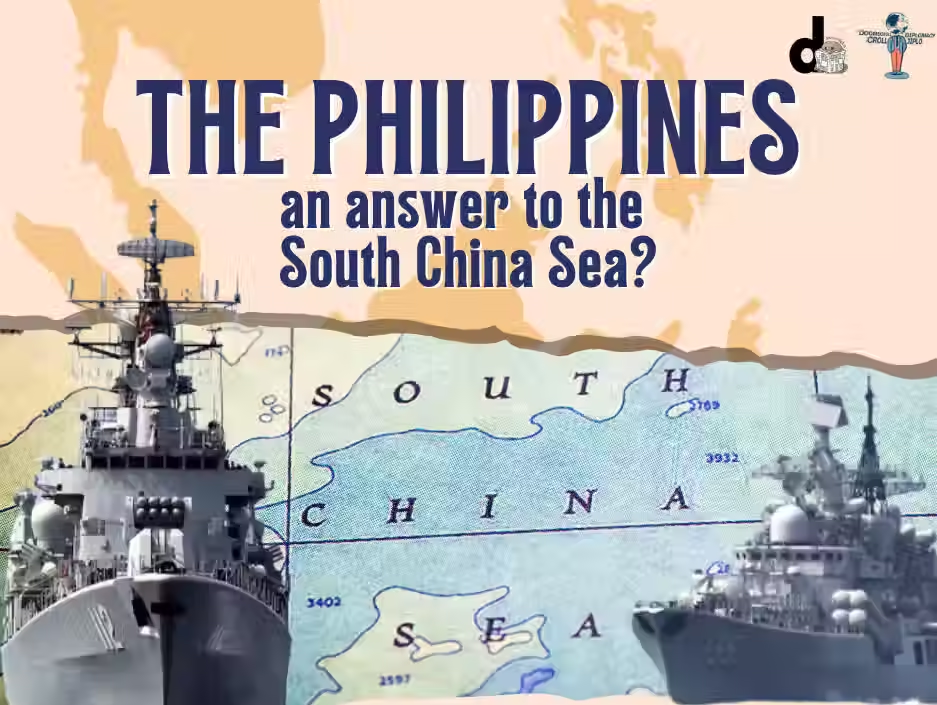The Art of (Trade) War
- Discuss Diglett

- Apr 12
- 5 min read
Updated: Jul 24
*This article is published in collaboration with Discuss Diglett, a blog run by youths keen on sharing their love for law, politics and economics. For more, check out Discuss Diglett's website and Instagram @DiscussDiglett today!
IT’S LIBERATION DAY IN AMERICA! Against all forms of conventional economic advice, Donald Trump doubles down on his signature policy move and has made good on threats to punish the world for what he views as unfair treatment of Americans. We have covered Trump’s 25% tariffs on Canada and Mexico in a previous Discuss Diglett article (partially rolled back since then). This time around, Trump has announced a 10% blanket hike on all exports to the US regardless of nation of origin. A further list of 90 or so countries that Trump claims to have “high tariffs and unfair economic practices” would be targeted with enhanced “reciprocal tariffs”. Multiple nations across Asia have topped this list, including Cambodia and Laos at an eye-watering 49% and 48% respectively. While Singapore seems to have escaped the worst so far, dark clouds remain on the horizon as the trade-reliant nation learns to navigate Trump’s new world economic order. This essay will examine how Singapore has reacted to this brusque turn in US trade policy.
Small but mighty
With its small and open economy heavily dependent on trade, Singapore has always been an oddity in Asia. Unlike most of Asia, the US in fact enjoys a significant U$30bn trade surplus with Singapore i.e. Singapore’s import volume from the US exceeds her export volume to the US (this is also the case for Hong Kong and Australia). Singapore’s trade relations with the US are anchored by the U.S.-Singapore Free Trade Agreement (USSFTA). The first nation in Asia to have signed such an agreement with the US, bilateral trade has been effectively duty-free since 2004. 2 decades on, trade volume has tripled to US$120bn as of 2022. Meanwhile, the US government has also attributed the support of nearly 250,000 US jobs to bilateral trade and investment support. Trade aside, the USSFTA has also fostered closer intergovernmental collaboration in various sectors such as the digital economy, green economy and healthcare where partnership at the government level has translated into capacity-building and private sector innovation.
Headwinds Ahead

In short, Singapore’s reliance on trade means that even as she is spared from retaliatory tariffs, the secondary impact is likely to be swift and severe. All of Singapore’s top 10 trading partners in Asia have been slapped with high retaliatory tariff rates and ripple effects will inevitably reach our shores. Already, Deputy Prime Minister Gan Kim Yong has warned that Singapore’s full-year growth forecast may be downgraded as a result of the resultant fallout. In the meantime, Singapore has ruled out imposing retaliatory measures and indicated its willingness to facilitate dialogue with US officials instead.
Next, Trump has not ruled out imposing additional 25% sector-specific tariffs on semiconductors and pharmaceuticals, both of which are key products that Singapore exports to the US. However, an Oxford Economics report has suggested that concerns over the impacts to Singapore’s exports may be overblown.

“If all threatened tariffs on specific goods come into effect in April, at most, 3% of Singapore's total exports would be impacted since only 8.5% of Singapore exports were to the US in 2024.”
Moreover, Singapore’s role as a key manufacturing hub for US firms in both sectors may also serve as a crucial bargaining chip in future negotiations. Major semiconductor manufacturers such as Micron and GlobalFoundries have decades-long tenures in the island state and have billions of dollars worth of investments in the pipelines. The Tuas Biomedical Park also houses multiple American pharmaceutical companies, counting AbbVie, Pfizer and Merck & Co among others. Given the huge sums at stake, it would not be unheard of for these firms to lobby the US government for an exemption from sector-specific tariffs. Notably, Singapore also has valid grounds for "recourse" under the USSFTA but has indicated that it would not do so.
Diversification is the solution
Even before Trump’s tariffs have become reality, Singapore has taken proactive steps to diversify its economic partnerships and strengthen regional cooperation so as to safeguard its trade and investment interests.
One key initiative is the Johor-Singapore Special Economic Zone (JS-SEZ), which aims to strengthen economic cooperation between Singapore and Malaysia. It focuses on attracting high-value investments in key sectors like manufacturing, logistics, tourism, clean energy, and the digital economy, supported by tax incentives and streamlined regulations. The SEZ also improves the movement of people and goods across the Johor-Singapore border by enhancing customs processes and transport links, and may even allow passport-free clearance in the future. By combining Malaysia’s land and labour with Singapore’s financial and investment strengths, the region hopes to unlock greater economic value. After all, the Johor-Singapore land border is one of the busiest in the world. The SEZ is expected to create around 20,000 skilled jobs over the next decade.
Beyond the region, Singapore has also been strengthening its global trade connections, such as through the Pacific Alliance-Singapore Free Trade Agreement (PASFTA) signed on January 26, 2022, with the Pacific Alliance, comprising Chile, Colombia, Mexico, and Peru. Hailed as a major milestone in Singapore’s ties with Latin America, PASFTA is expected to significantly boost investment flows as Singapore gains direct market access to the 8th largest exporting bloc. The benefits of PASFTA are immense. In 2016, the Pacific Alliance members signed the Protocol of the Framework Agreement, which removed 92% of tariffs between Singapore and members of the bloc. Of particular interest is collaboration within the digital and maritime sector, both of which are identified as areas with strong growth momentum for Singapore.
Finally, Singapore has also called for closer cooperation among ASEAN partners, emphasising the importance of “deepening regional economic integration” in times of global uncertainty. At present, many nations have declared their intention to send delegations of trade negotiators to Washington in an attempt to hammer out an agreement with Trump. Yet, if Trump’s real intentions are to clamp down countries that have reaped the benefits of the “China Plus One” strategy, bilateral talks are almost bound to fail.
Global trade has been severely disrupted by Trump's new tariffs. Despite not being specifically targeted, Singapore will eventually face secondary effects due to its extensive involvement in the global economy. However, Singapore has taken steps to prepare itself well ahead of the storm. It has committed to open trade, built strong ties with other countries, and made active efforts to diversify. By hedging risks across numerous trading partners, Singapore is in a position of resilience even as volatility of international trade relations becomes the new norm in the Trump era.
*As the situation remains highly fluid, information within this article is taken to be accurate as of 12 April 2025.
References
Buchwald, E., Radford, A., Towfighi, J., Egan, M., Wallace, A., Chowdhury, M., Hammond, E., Harvey, L., & Lau, C. (2025, April 2). April 2, 2025 - Liberation Day tariff announcements . CNN. https://edition.cnn.com/business/live-news/tariffs-trump-news-04-02-25/index.html
Choi, A., Robinson, L., Warnes, S., & Buchwald, E. (2025, April 2). Understanding the scope of Trump’s tariffs so far, in 4 charts. CNN. https://edition.cnn.com/2025/04/02/business/canada-mexico-auto-tariffs-trump-dg/index.html
Cortes-Sanchez, S. (2022, March). Asian Trade Centre. Asian Trade Centre. https://asiantradecentre.org/talkingtrade/more-than-a-decade-of-the-pacific-alliance-implications-for-singapore-and-the-region
Ng, A. (2023, April 3). Trump tariffs: Singapore economy could be hit hard by trade slowdown but there may be a silver lining, say analysts. CNA. https://www.channelnewsasia.com/singapore/trump-tariffs-trade-slowdown-singapore-benefits-5041671
Opportunities could mitigate hit from US trade barriers. (17 C.E., March). Oxford Economics. https://www.oxfordeconomics.com/wp-content/uploads/2025/03/Singapore-Opportunities-could-mitigate-hit-from-US-trade-barriers.pdf
President Trump Delivers Remarks on New Tariffs. (2025, April 2). C-SPAN.org; C-SPAN. https://www.c-span.org/program/white-house-event/president-trump-delivers-remarks-on-new-tariffs/658000
PricewaterhouseCoopers. (2025). Johor-Singapore Special Economic Zone. PwC. https://www.pwc.com/my/en/services/tax/johor-singapore-special-economic-zone.html
Singapore will keep working closely with Malaysia, Asean to deepen economic integration: PM Wong. (2025, April 5). The Straits Times. https://www.straitstimes.com/singapore/singapore-will-continue-working-closely-with-malaysia-asean-partners-to-deepen-economic-integration
Swanson, A. (2025, April 3). Why Did Trump Impose Tariffs, and What’s Next? Everything to Know. The New York Times. https://www.nytimes.com/2025/04/03/business/economy/trump-tariffs-trade.html




Comments